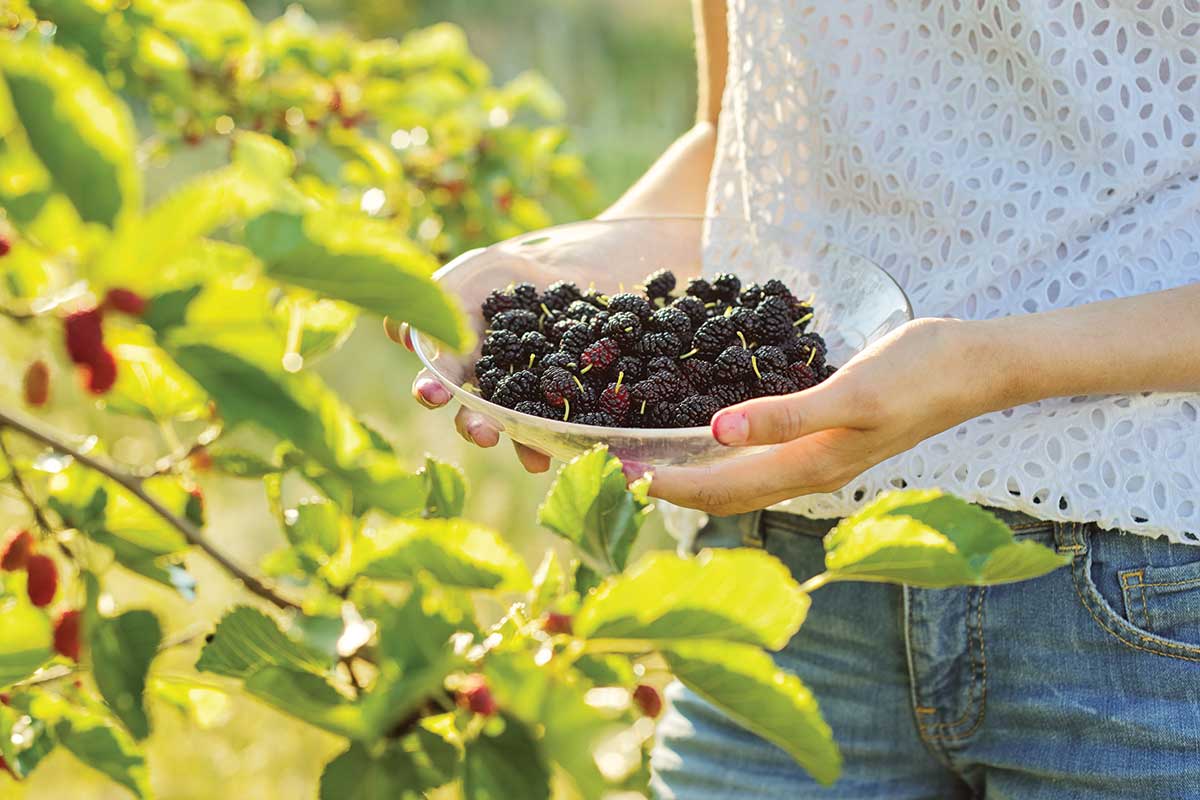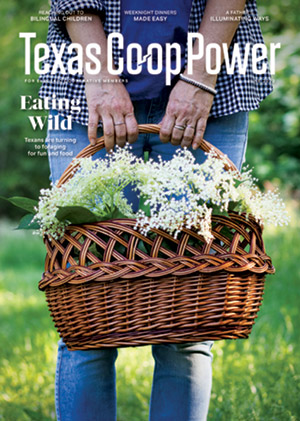I’ve yanked henbit and chickweed for years from my native-plant gardens, nearly eradicating the weeds that pop up every winter.
If only I’d known that the European species make tasty additions to salads. So I decided in December to let them stay put. Then I’d have some fresh leaves and flowers to toss with spinach, tomatoes and dressing.
Many of the native plants are edible too, like turk’s cap, dayflower, wood sorrel and spiderwort. Hold on—eat my natives? The concept boggles my mind. As a Texas master naturalist, I’m familiar with most of the ones that grow in my region. On the other hand, since childhood I’ve been conditioned to eat foods only bought at grocery stores or intentionally grown in gardens, not picked from a lawn or some wild place.
Then I recall our ancestors foraged to survive. Their hardscrabble lifestyles make me determined to loosen up. And I am. In March I picked blossoms from our eastern redbud tree and added them to salads. This summer I’ve been nibbling on turk’s cap berries and pink evening primrose leaves. As I learn more about wild edibles, the plants that grow around my yard have taken on a different meaning.
I’m not alone in my new outlook. For a number of reasons, more and more people are hunting for edible plants.
“It used to be just adventurer eaters, foodies and cooks who mainly foraged,” says Mark Vorderbruggen, author of an Idiot’s Guides book on foraging. “Then the pandemic came, and people got scared about getting food if the markets closed. It made them go outside in search of alternative food sources. Now with inflation, food has become more expensive. People want to know where they can get free nutrition.”
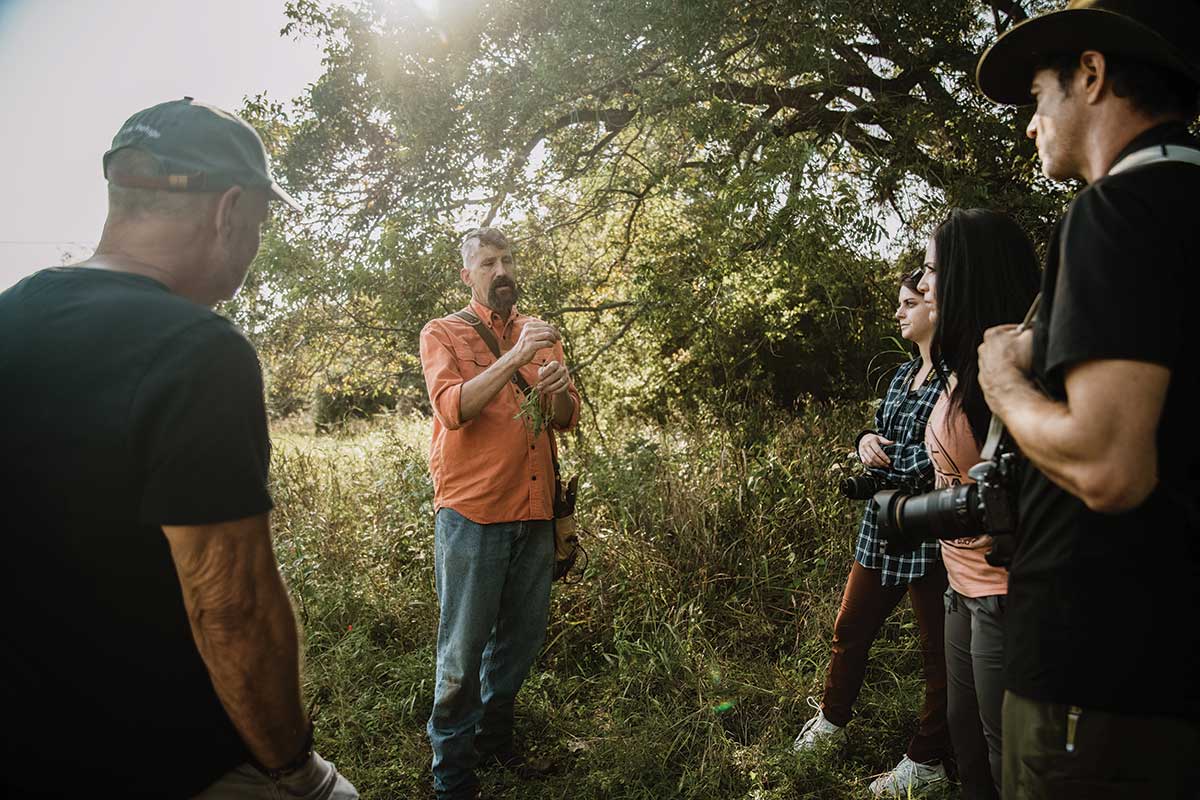
Mark Vorderbruggen leads a foraging class at Spoke Hollow Outfitters near Wimberley in the Hill Country.
Courtesy Mark Vorderbruggen
Cut With Care
So what makes a wild plant edible? In a nutshell, it’s nonpoisonous, palatable and digestible. Many have health benefits too. “In vitamins, minerals and protein, wild food can match and even surpass the nutritional content of our common foods,” writes Delena Tull in Edible and Useful Plants of Texas and the Southwest. “Dandelion greens are more nutritious than spinach.”
Foragers must always ask for permission before scouring private property. On some public lands, such as national parks and many state parks, it’s illegal to take plant materials. Steer clear of toxic areas, like highway roadsides and places frequented by pets.
And some final words of caution: Before eating any wild plant, be absolutely certain of its identity. Read books on the subject, learn some basic botany, take foraging classes and go out with an experienced forager to gain an understanding of what you should and shouldn’t eat.
Then start with easy plants, like turk’s cap and pecans. As you gain knowledge, add species that you can readily identify. Also, eat wild edibles in moderation and be mindful of possible reactions. For example, if you’re allergic to cashews and mangoes, avoid their cousins: evergreen and flameleaf sumacs.
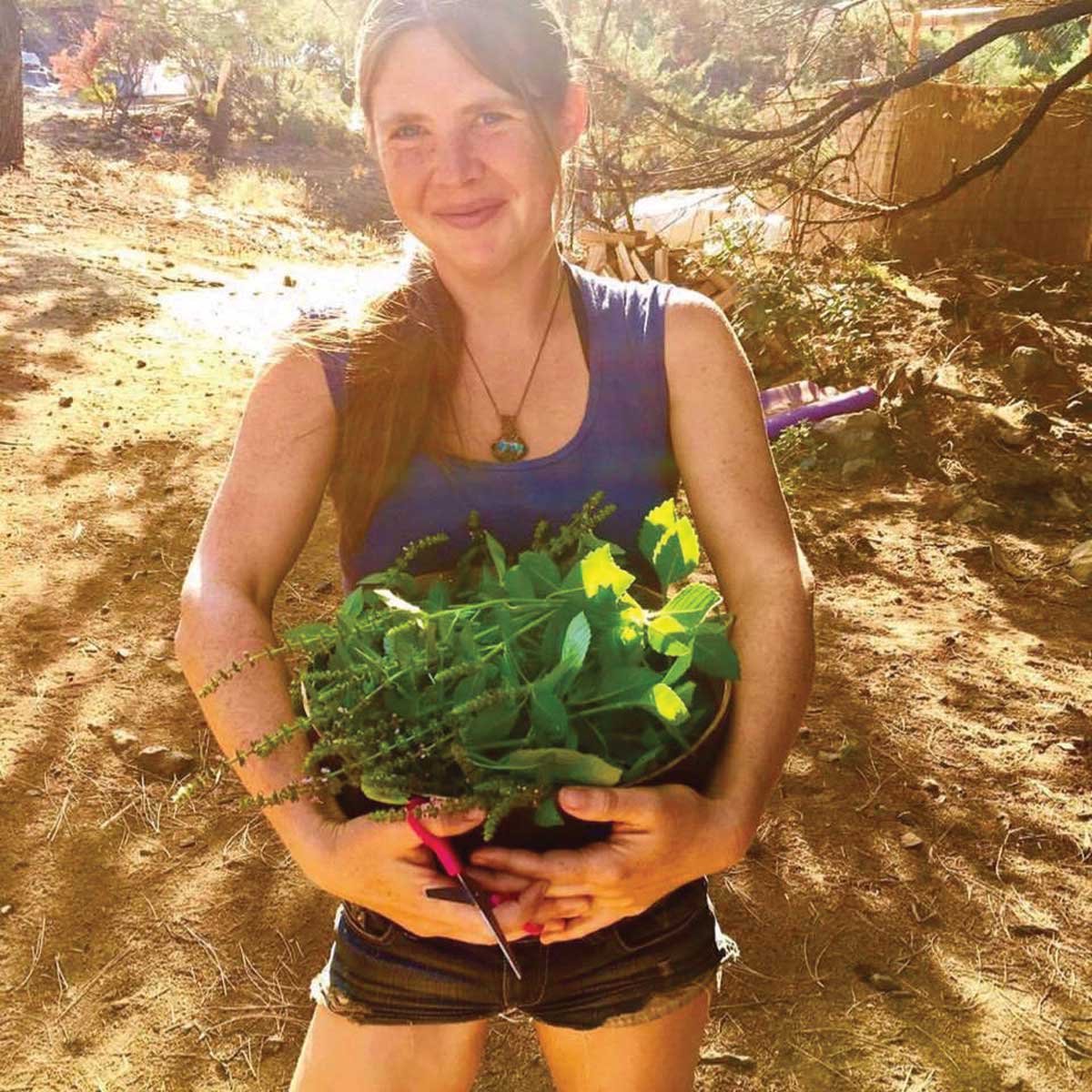
Courtney Taylor is a 20-year foraging expert, especially on North Texas edibles.
Courtesy Courtney Taylor
“Nature is a mishmash of greens and browns,” says foraging expert Courtney Taylor of Weston, north of Dallas. “To most people, plants all look the same. It takes time, patience and consistency to learn the nuances between them. Wood sorrel and clover, which are both edible, look similar but have subtle differences.”
Taylor, a Grayson-Collin Electric Cooperative member, teaches basic foraging classes and compiled a 60-page e-book on North Texas edibles. In every class, she stresses foraging etiquette.
Rooted to the Spot
In far North Texas, Kimberly Clark, a member of Fannin County EC, learned to forage by watching YouTube videos and joining foraging groups on Facebook. “Now my two kids like to forage with me on our acreage and in our area,” she says. “We harvest elderberry, cattails, water violets, peppergrass and sorrel. My son’s favorite is wild carrot, also known as Queen Anne’s lace.” (Caution: Queen Anne’s lace looks similar to two extremely toxic plants: poison hemlock and water hemlock.)
Come midsummer, Tom Mitchell Jr. of Cleburne steers a golf cart around his neighborhood, looking for clusters of ripe flameleaf sumac berries. “They make a great mock lemonade,” says Mitchell, a commercial pilot and United Cooperative Services member. “I put the berries in a pot of water and let them sit overnight. Then I strain the pink liquid and add some honey. The lemony flavor comes from the berries’ malic acid. I also dry sumac berries, then grind them up to use as a spice.”
Last year, forager Racheal Balliu—a Pedernales EC member and registered nurse who lives near Canyon Lake—took some “yard butter” to a party. At first her friends hesitated to sample the creamy condiment, mixed with chickweed, peppergrass, henbit and wild onions. “I’ve found that people are sometimes nervous to try foraged foods,” Balliu says. “But after trying my butter, they loved it. They also love the pesto that I make with chickweed, basil, parmesan and pecans.”
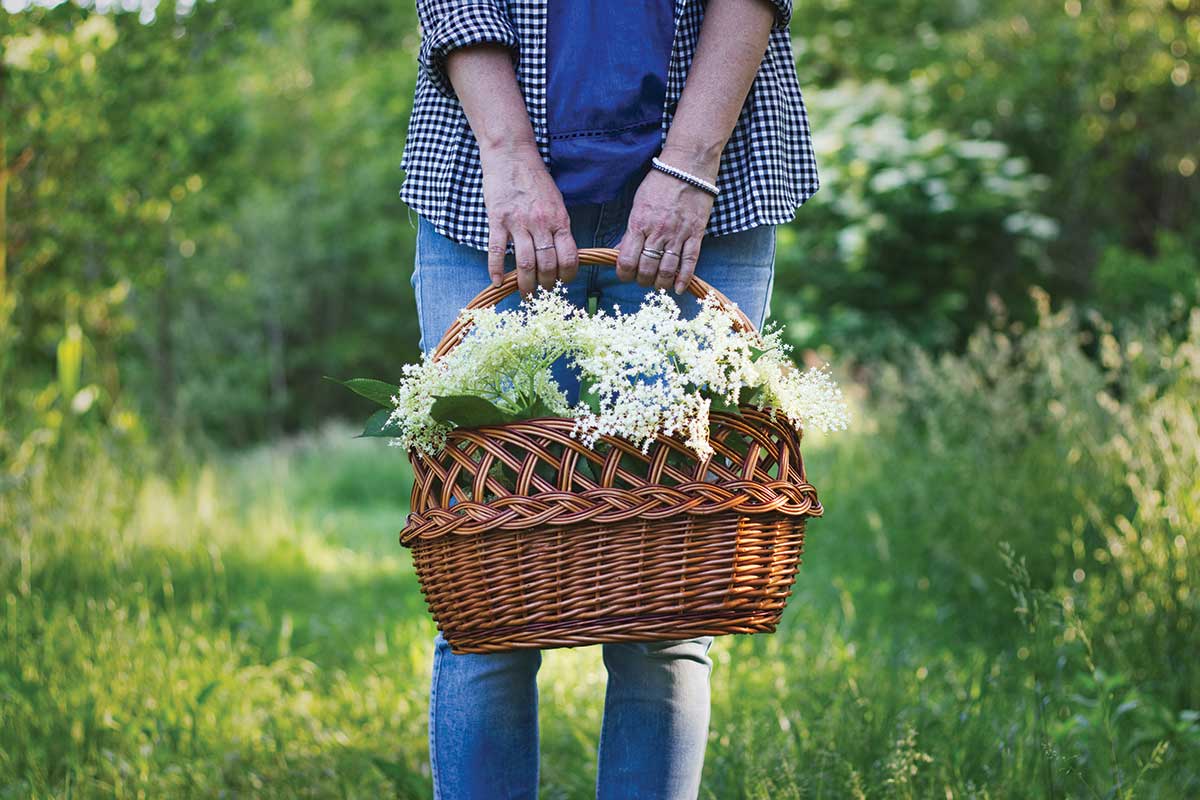
Flowers from elderberry trees can be eaten right off the branch.
Enciero | Stock.adobe.com
Her interest in wild foods has since morphed into a business called Forest Girl Wild American Tea. Her green and roasted yaupon teas are available online and sometimes at farmers markets. “Yaupon holly is the only natural caffeine in North America,” she explains. “I hand-pick yaupon leaves on family land, wash and air-dry them, and then package the leaves as both tea bags and loose leaf.”
In the Rio Grande Valley, wild edibles aren’t as easy to find. That’s because more than 90% of native habitats have been cleared through the years for agriculture and urbanization. “The nature we see here is more sterilized,” says Jackelin Treviño of McAllen. “Buffalo grass and oaks are lovely, but they’re not forageable. I see that gradually changing as cities plant more native plants.
“Foragers here are basically limited to private property with permission and conserved areas, where foraging is discouraged,” she continues. “When I’m able to forage, my favorite wild edible in the Valley are berries from brasilwood. They look like blueberries, are shiny like grapes and taste like blackberries.”
Out west in El Paso, the Chihuahuan Desert would seemingly offer even fewer finds. But outdoorsman James Harris knows better. For nearly a decade, he’s researched the vegetation and wildlife that inhabit the arid region that he’s called home all his life. Now he shares his knowledge about wild foods and other survival skills through videos.
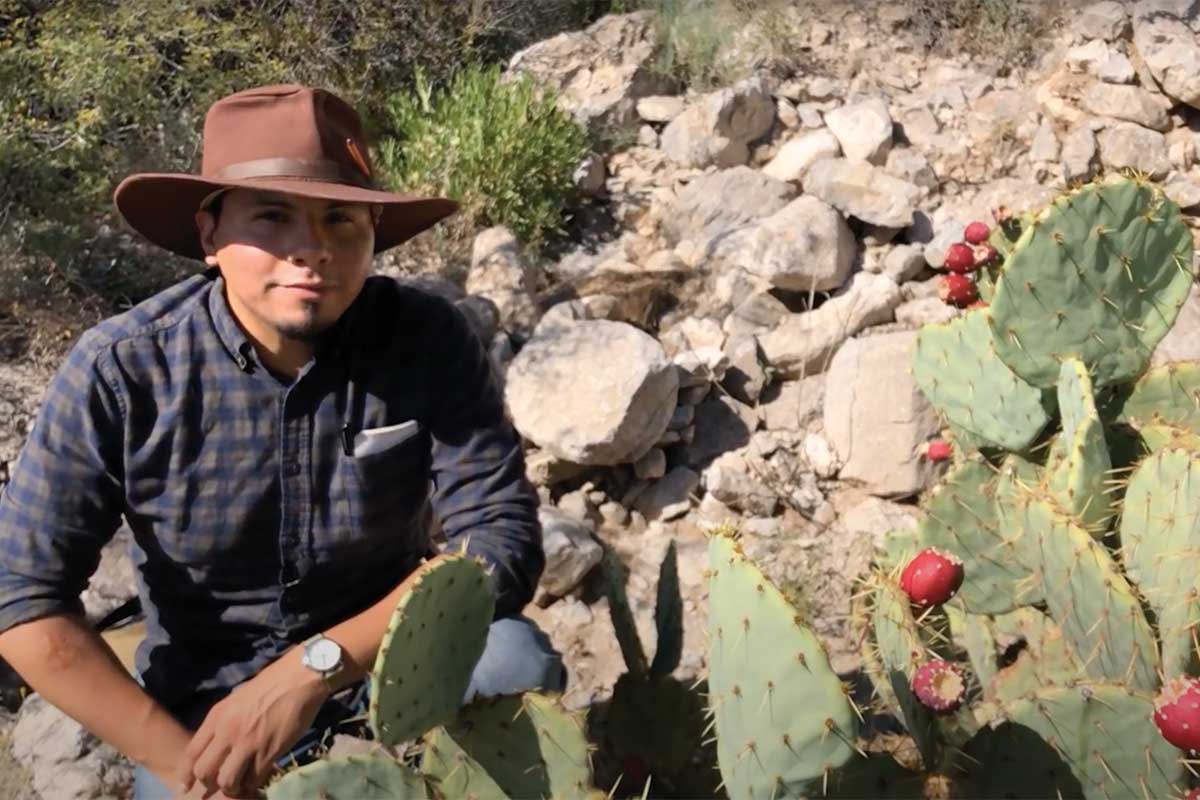
James Harris uses the fruit of prickly pear cactus, called tunas, to make refreshing juice.
Courtesy James Harris
“Out here, one of our most plentiful wild edibles are honey mesquite pods and beans,” he says. “They’re very versatile. You can use them to make small cakes, teas, jellies, jams and energy bars. They also make a good coffee substitute, even though they don’t have caffeine.”
Prickly pear cacti are also very common, Harris says, and their pads and fruit are edible. “They’re a pain to gather because of the thorns, so I always carry tweezers,” he says. “Another edible is the banana yucca, which I call the ‘supermarket of the desert.’ The young flower stalks can be cut and cooked like asparagus. The white flowers are edible. You can also cook the green fruits.”
From yuccas to chickweed, I noted a common interest in my conversations with foragers from across the state: They all love getting outside and exploring wild places. As Harris explains, “Being outdoors grounds you closer to the earth. You have a higher appreciation for the seasons and the plants when you interact with nature.”
I couldn’t agree more.
Corrections: June 7, 2022
This story was updated to correct a quote by foraging expert Courtney Taylor, which had referenced “wood clover.” What Taylor said was “wood sorrel.” Also, not all foraging on public lands is illegal. Foraging in national parks and many state parks is not allowed.
